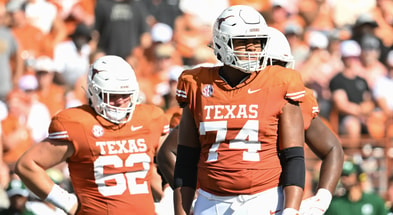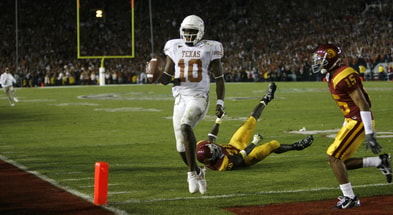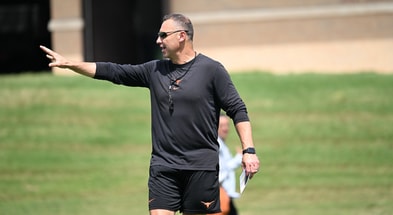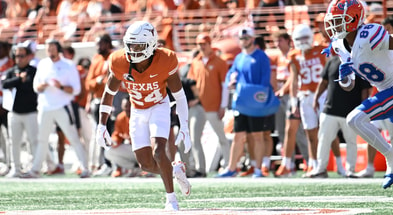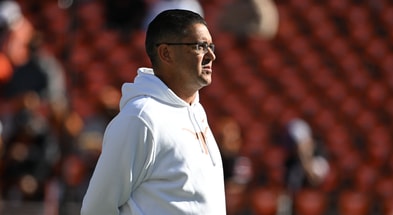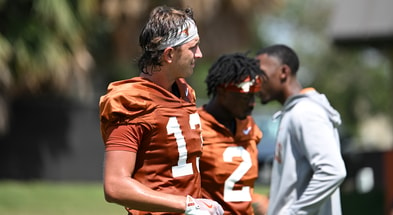Steve Sarkisian approaches his fifth year, a milestone for 21st century Texas football

For the first time since 2002, a head football coach of the Texas Longhorns is entering his fifth season.
[Sign up for Inside Texas TODAY and get the BEST Longhorns scoop!]
There are obviously multiple reasons why it’s been over two decades since a head coach at Texas prepared for a fifth season in Austin like Steve Sarkisian is doing ahead of the 2025 campaign. First and foremost, Mack Brown coached 11 additional seasons after the 2002 campaign, winning two Big 12 championships and the 2005 national title.
The second biggest reason is what sticks out in fans’ minds. Both Charlie Strong and Tom Herman, Brown’s two successors, didn’t make it past year four leading the Longhorns.
So as Sarkisian prepares for a year that only nine of the Longhorns’ 23 previous coaches have gotten to, it’s worth looking at why he’s about to join select burnt orange company.
David Allerdice was the first to reach five years in an era where coaches just about changed with the seasons. He was 33-7 as Texas’ head coach, but resigned following the 1915 season due supposedly to the “super critical nature of the Texas fans.”
While college football looks like a different sport compared to 110 years ago, there are still aspects that have held true over the 150+ years that it has existed. Just ask Blair Cherry.
To make it this far at Texas, you not only have to win but you also have to have thick skin. You have to understand that media, both local and national, are going to criticize every decision you make on and off the field. To make it this far, a coach has to have a comfort level with that type of responsibility. Sarkisian exudes a type of confidence that comes from not just his life experiences good and bad, but also his ability as a coach. It may have taken a stint with Nick Saban for him to re-recognize that was still in him, but there’s no doubt we see it on constant display.
You also have to have bona fides, whether they were first earned elsewhere and displayed at Texas or were unearthed in Austin. Dana Bible was Texas’ first superstar coach, someone who carried over two decades of success into his Longhorns tenure. He struggled out of the gate but eventually found a stride where his program recorded five top 15 finishes in his final six seasons. He then handed off things to Cherry.
Which leads us to the next thing required to get to this stage: you have to keep it going. Edwin Price notched two top-11 finishes within his first four seasons, but he sputtered at the end of his career before finishing his time at Texas with a 1-9 1956 campaign.
Where Price failed, Darrell Royal succeeded.
Royal reached the 10-win threshold in his fifth year, then did it six more times across his 20-year reign that made him the best coach in Longhorn history. Even when there were lulls, Royal innovated in a way that returned his program to prominence with the wishbone. Success is essential in the first four years to get to year five, but it’s also essential in the next five. And part of that success may be mild reinvention, like becoming a total football coach and not just an offensive wiz kid.
Top 10
- 1Breaking
Coaches Poll
Preseason Top 25 released
- 2Hot
Joel Klatt
Releases Preseason Top 25
- 3Trending
Top Rivals 5-stars since 2000
Counting down the best
- 4
Derek Dooley
Announces U.S. Senate Bid
- 5
Blurred out QB
Vols protect INT thrower
Get the Daily On3 Newsletter in your inbox every morning
By clicking "Subscribe to Newsletter", I agree to On3's Privacy Notice, Terms, and use of my personal information described therein.
Remaining coaches “kept it going” to varying levels of success. Fred Akers, thanks to victories achieved in the Earl Campbell era, turned his wins in the late 1970s into runs at national championships in the early 1980s, specifically his fifth season in 1981. Clemson’s undefeated status and a blowout loss to Arkansas may have been the only things separating Akers from joining his predecessor as title winning Texas coaches. No need to mention the 1984 Cotton Bowl.
What Akers was able to accomplish, David McWilliams and John Mackovic could not replicate. Those two showed promise but only in one-off campaigns. Their tenures ended soon after their fifth seasons because there was no level of consistency in the program in addition to the lack of characteristics needed for a rewarding but challenging college job. That’s despite McWilliams being a Longhorn lifer (something he still is to this day) and Mackovic possessing NFL bona fides. They couldn’t put it all together.
So what about Brown? Brown arguably squandered national title chances in his fourth and fifth seasons, but his persona, consistency, and ability to adapt (plus guys he brought in named Vince Young and Colt McCoy) allowed him to turn what was a very good tenure after five years into the best Texas has seen this century.
Strong and Herman therefore function as outliers. They were the first coaches since Cherry, who was in charge from 1947-1950, to not make it five seasons. And Strong and Herman did not leave of their own volition like Cherry.
It could be that Texas selects for coaches that have the ability to last in their time in college football. But those coaches had to prove they had that ability at Texas.
Sarkisian has done that within his first four years, winning a Big 12 championship and playing in two College Football Playoffs.
[Order THE LONGHORN ALPHABET today and teach your little ones the A to Z’s of Texas Football!]
A lot of what it takes to make 10 years is needed to make it to five. Whether Sarkisian can do that before he hangs up the whistle or decides on some other destination remains to be seen, but solely in keeping his job, he’s joined quality company on the 40 Acres.



